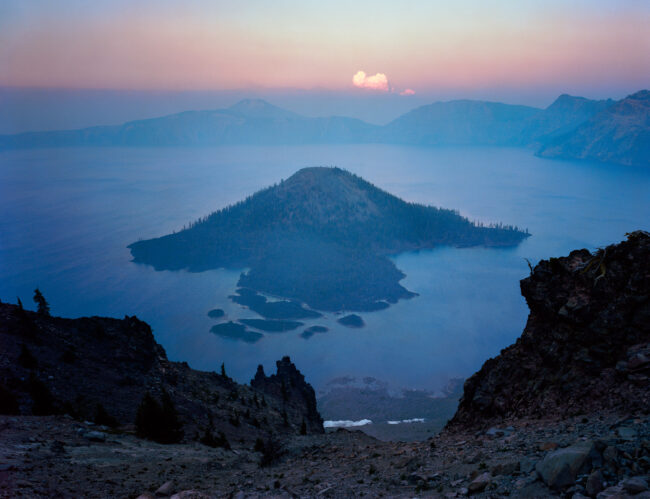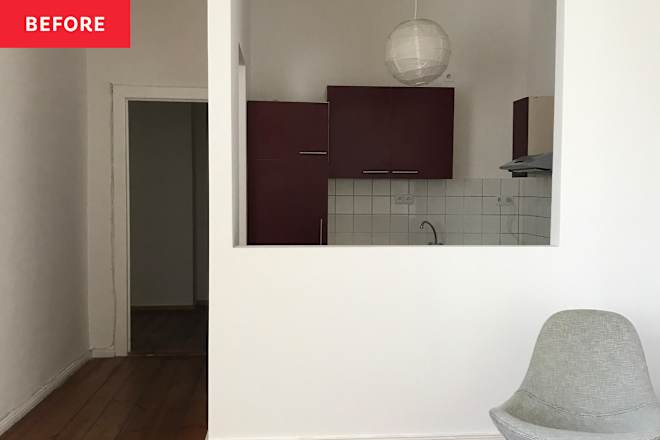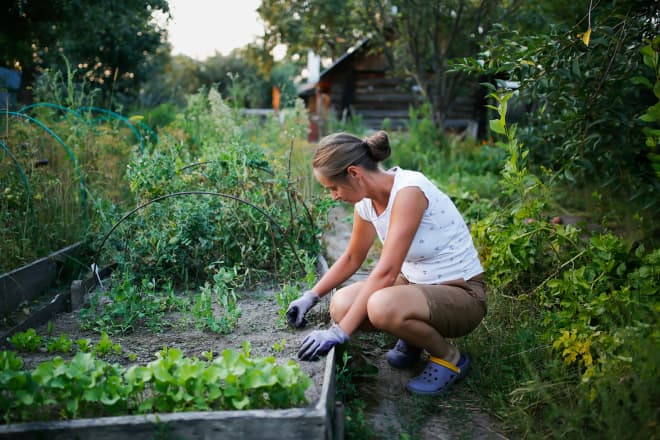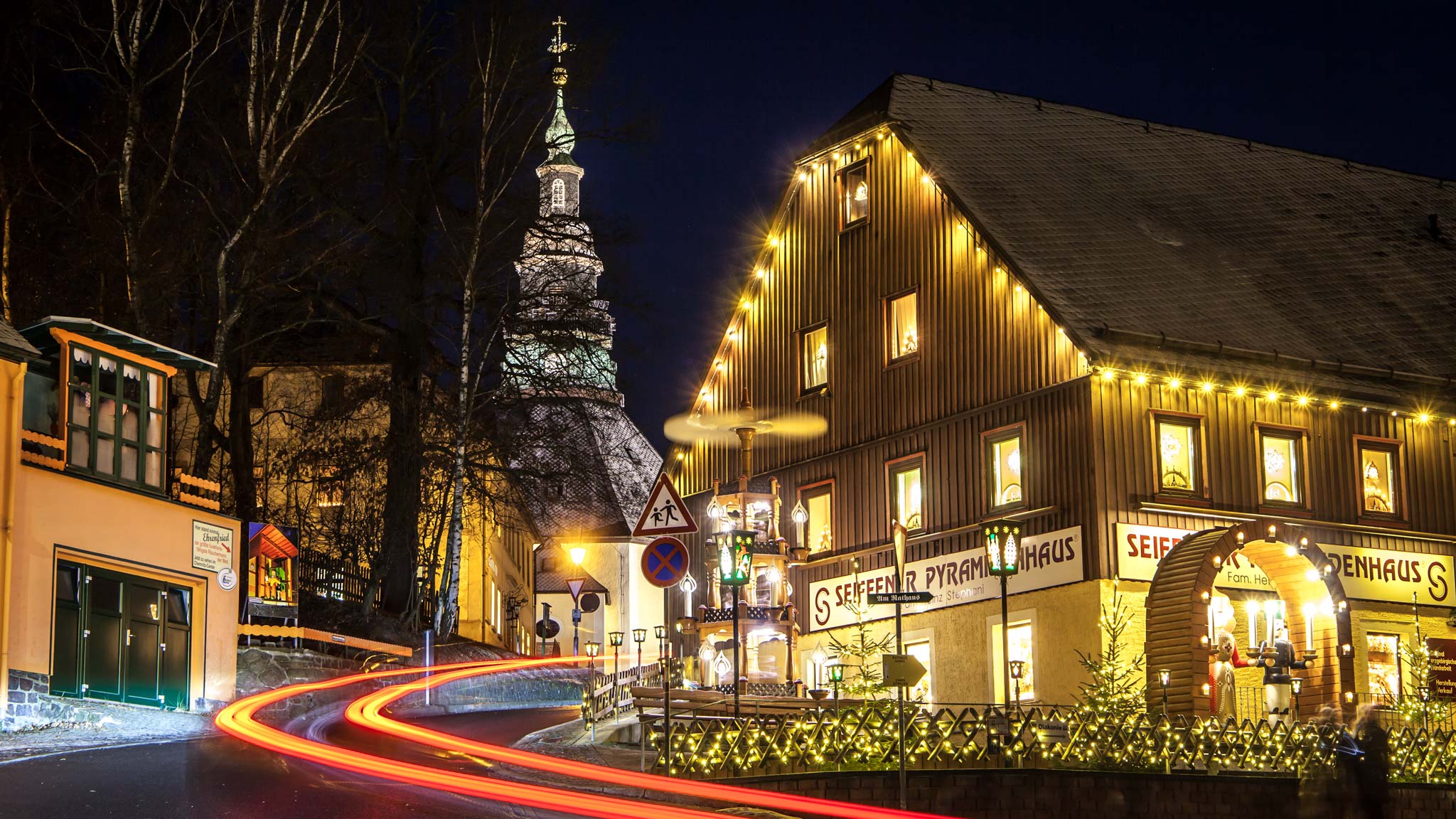12 of the best national parks and nature reserves in Portugal
Surprises come as standard in Portugal’s incredibly varied natural parks. Here's our pick of the best.

Portugal only has one (epic) national park, but its clutch of reserves, geo and natural parks more than compensate. Crammed within the country’s relatively compact borders are diverse, free-to-access natural spaces spanning snow-speckled protected peaks and sun-seared, safeguarded sandy isles.
Unexpected adventures? You bet. Multiday treks traverse the country’s best beaches. River-hugging hikes lead to mind-boggling “birthing stones.” Seasonal visits can mean skiing, flamingo-frequented wetlands, or bedding down in an old island fortress. And then there’s the prehistoric rock art, frontier-crossing falcon sightings, and subterranean speleothems. Surprises come as standard in Portugal’s best natural parks. 
1. Parque Nacional da Peneda-Gerês
Best national park for hushed hikes and summer fun
Portugal’s sole national park, the 703-sq-km (271-sq-mile) Parque Nacional da Peneda-Gerês is phenomenal. Straddling the nation's two northernmost regions and arching around Spain, the park’s four main mountain ranges shelter endangered and elusive Iberian wolves, roe deer and wild Garrano horses in their folds. Yet Gerês preserves more than wildlife and pristine, waterfall-laden landscapes – around one hundred perennial granite villages are scattered throughout. Here, far from the fast-changing coastal cities, you’ll still find Castro Laboreiro’s centuries-old dog breeds accompanying shepherds, ox-drawn carts working corn fields, and espigueiros (stilted, stone-built granaries) spilling out from stuck-in-time Soajo.
Come after winter’s snow has thawed and aquatic adventures abound. Exhilarating canyoning, kayaking down the Cávado, rafting on the Minho, and trekking between tumbling waterfalls like Cascata do Arado will feed any adrenaline craving. Hiking is equally remarkable. Ease in among the Mata de Albergaria's pristine oak forest, walking atop the Roman-placed slabs of the historic Via Geira. Then, tackle the 16.7km (10.4-mile) Trilho Castrejo, a challenging meander between meadows, castle ruins and lofty, goat-roved seasonal pastures.
Visiting Peneda-Gerês National Park: Roads reach most miradouros (lookouts) and trailheads, but bus services are more suited for slow travel. Peneda-Gerês has a couple of official campgrounds alongside village guesthouses and thermal spa resorts – book well ahead in summer. 
2. Parque Natural do Sudoeste Alentejano e Costa Vicentina
Best natural park for surf and coastal hikes
Curving around Portugal’s scenic southwestern corner, the Parque Natural do Sudoeste Alentejano e Costa Vicentina is a serious contender for Europe’s best active coastal escape. Sensational surf pounds ocean-chiseled bays, river-wrapped and dune-ribboned beaches dazzle, and near Cabo de São Vicente, mainland Portugal's southwesternmost point, Sagres’ hulking, windswept fortress surveys the endless Atlantic ocean. Dramatic? Yes. De-stressing? Even more so.
Traversing it all, between Sines in the Alentejo and Lagos in the Algarve, are the Rota Vicentina’s two outlandishly handsome 13-day trails. Plan a foot-forward fortnight here, and the 226km (140-mile) cliff-hugging, beach-crossing Fishermen’s Trail will take you on the kind of soul-stirring, sandy shoreline amble that seafood and sunset dreams are made of. Slightly inland, the Historical Way traces donkey-trampled tracks through typically Mediterranean, juniper-scented scrub. Prefer your treks bitesize? Each section is roughly 20km (12.5 miles) between settlements, ideal for a sun-kissed day in nature.
Visiting Southwest Alentejo and Costa Vicentina Nature Park: Quaint towns within the park, including Aljezur and Porto Covo, are reachable by bus (Rede Expresso or Vamus in the Algarve), though limited timetables mean linear day hikes need good planning. A luggage transfer service can lighten the load on multiday routes. 
3. Parque Natural da Serra da Estrela
Best park for four-season adventures
A smorgasbord of seasonal adventures abounds in the boulder-strewn planalto (high plateau) of Portugal’s largest protected park, the Serra da Estrela. Sprawling out from Torre, the mainland’s highest peak at 1993m (6538ft), are glacier-carved valleys, oak and pine forests, sheep-herded meadows, the Mondego and Zêzere rivers’ sources, and some of the Beiras’ most enchanting, and loftiest, villages.
Come in spring to hike the PR6 MTG from peak to pasture against a backdrop of yellow-and-blue wildflowers. In summer, join the eagles and falcons on a paragliding rush from wind-perfect Linhares da Beira before cooling in the Poço do Inferno waterfall. Fan of fall? Copper-hued chestnut trees and golden birches blaze as climes cool. Rounding off the year is a splattering of snow, giving Portugal’s only ski resort a brief stint. This estrela (star) has the lot.
Visiting the Serra da Estrela Nature Park: Hire a car to explore the park in a day, including driving to the top at Torre. Limited buses will only get you as far as Seia or Manteigas (from Guarda with TransDev). If you’re visiting during the snow season, check road access and purchase ski passes online in advance.
4. Parque Natural da Arrábida
Best natural park for a city beach escape
An hour south of Lisbon by train, the Setúbal Peninsula shelters some of Portugal’s finest, family-friendly sandy coves among the vegetation-clad limestone cliffs of the Parque Natural da Arrábida. The flora is distinctively Mediterranean – with wild olive trees, orchids, corks and pines – yet the ocean scenes of swirling cyans and cream-hued sands could be plucked straight from a Caribbean postcard. For the best panoramas, drive the high hill-slicing road or hike up 380m (1247ft) Serra do Risco to survey the verdant cliffs sinking into the shimmering shallows.
But the main magic is beachside. Satiny sands are lapped by calm, crystal-clear ripples, with water temperatures slightly more welcoming than those on the exposed west coast. Bring a picnic and beeline to Praia da Figueirinha or Galapinhos for a delightful day of sunbathing and splashing, or join a boat or kayak tour to visit the otherwise inaccessible bays in the Luiz Saldanha Marine Park.
Visiting Arrábida Nature Park: Setúbal (easier access) and Sesimbra are the closest urban bases, but a day trip from Lisbon is straightforward. Carris Buses are Setúbal’s quickest onward beach connection, especially in summer, when car access is restricted.
5. Arouca Geopark
Best geopark for boardwalks and trilobites
Rewind some 420 million years, and what is now Arouca Geopark was deep undersea – an era recounted today via the remarkable trilobites found across the 328-sq-km (126-sq-mile) park. Spend an hour at the Museu das Trilobites, marveling at the Ordovician-period Giant Trilobites of Canelas – some of the world’s largest, up to 70cm (28in) – and it’s impossible not to be wowed. But there’s more. On the Serra da Freita’s slopes awaits an even more mind-boggling phenomenon: the pedras parideiras (birthing stones). Both baffling and unique, these giant granite rocks take thousands of years to grow and push out smaller biotites, which, even after a tour of the interpretation center, seems incomprehensible.
Geological wonders aside, Arouca abounds with village-anchored hikes across its slender valleys. Top billing goes to the 8.7km (5.4 miles) Passadiços do Paiva, a river-tracking, linear trail of wooden walkways, steep staircases and gravel paths that can be paired with 516 Arouca, once the world's longest pedestrian suspension bridge.
Visiting Arouca Geopark: Arouca Town is the geopark’s central hub and a good base; Merujal is the only campsite in the park and usually has pitches on arrival. Access via public transport requires planning and connections – check TransDev from Aveiro or Porto’s UNIR lines.
6. Parque Natural do Douro Internacional
Best national park for Spain views and a second language
If you think the Douro Valley is all about wine, port and award-winning restaurants, its eastern Spain-shared stretch will leave you speechless. Gone are the perfectly manicured, terraced vineyards, replaced by craggy river cliffs, endless oaks, almond blossoms in late winter, and birds of prey. Nature still narrates the Parque Natural do Douro Internacional’s story, and phone signal and human sightings are sporadic outside of the isolated settlements. Most intriguing is Miranda do Douro. More than just an excellent base for birding and boat tours operated by the International Biological Station, you’ll also have the chance to hear Mirandês, Portugal’s second official language.
Visiting the Douro International Nature Park: Miranda do Douro is reachable by Rede Expresso buses from Porto, though the rest of the park requires a car. Prebook any boat tours to ensure a scheduled departure.
7. Parque Arqueológico do Vale do Côa
Best park for prehistoric art
Downstream from the Douro Internacional, at the confluence of the Côa and Douro rivers, the Parque Arqueológico do Vale do Côa is another level of open-air art gallery. Easily combined with a Douro Valley road trip, you won’t need longer than a half-day to see Côa’s star attraction, the Upper Paleolithic rock art etched into the valley’s walls. Begin at the contemporary, interactive museum before a prebooked 4WD tour trundles you through the vine- and forest-carpeted countryside towards one of the access-restricted archaeological sites where 20,000-year-old engravings of animals are etched into the craggy banks. If you’ve time to linger, join an excursion with Rewilding Portugal, which is doing incredible work supporting the return of vultures and Iberian wolves to the valley.
Visiting Côa Valley Archaeological Park: Guided tours to the protected art areas (from €18/US$20) must be booked in advance. 
8. Parque Natural da Ria Formosa
Best natural park for island-hopping
Stretching 60km (37 miles) across the Algarve’s south coast, the Ria Formosa is Faro’s nature-laden, ocean-shaped front room. Fetching and fascinating, this spectacular string of birdlife-sheltering wetlands, flamingo-harboring salt pans, cyan-swirling waters, and sandbar-like islands scuttled by chameleons more than earns its translated title as the “Beautiful Estuary”. For an on-land fauna and flora introduction, head to the Roman-founded estate of Quinta de Marim. Then, get out on the water.
Birders should embark on a near-silent, solar-powered excursion to spot curlews, spoonbills and Purple Swamphens – the park’s symbol – in the wetlands. SUP or kayaking the calmer lagoon is a treat. And if you’re simply after sun and sand, some of the Algarve’s best beaches are found on the islands of Tavira, Armona and Deserta. Seafood? Of course. Ilha da Culatra is the place for fresh-as-can-be oysters (Artur’s Watersports will take you on a shucking, farmer-meeting boat tour) or order a plate of conquilhas (small clams) at sunset, shortly after spotting licensed fishers pluck them from the sand by hand.
Visiting Ria Formosa Natural Park: Affordable ferries from Olhão provide easy access to the central islands of Armona and Culatra (including Farol). Animaris offers a more costly island-hopping pass. Stay overnight at Armona’s bungalows, Ilha de Tavira’s campsite or on a solar-powered houseboat. Ria Formosa Boat Tours operates a wheelchair-accessible boat with a water hoist.
9. Reserva Natural das Berlengas
Best biosphere reserve for seabirds and dolphins
Thirty minutes by boat from Peniche, the trio of granite, wind-whipped Berlengas Islands are mostly left to the elements. Bar researchers, fishers and scuba divers, only 550 daily visitors are allowed access to the largest isle, Berlenga Grande, between March and October, leaving the reserve’s endemic wall lizards, chattering seagulls and swooping peregrine falcons otherwise undisturbed.
For most, a visit lasts four or eight hours – plenty of time to walk the shade-free trail, peep the other isles and take a dip in the shallows of pint-sized Carreiro do Mosteiro Cove – often with an island-circling boat trip to (hopefully) spot dolphins and peek into caves. Yet, for all its untouched allure, it’s the ocean-jutting, 16th-century Forte de São João Baptista that commands the most camera attention – a military relic with simple, summer-only dorms.
Visiting Berlengas Nature Reserve: With capped numbers, reserving boat trips well in advance and purchasing the Berlengas Pass (€3/US$3.40) before arrival is essential. Book fort stays by emailing Associação Amigos da Berlenga. Bring a picnic and carry trash back – there aren’t shops or ATMs. 
10. Parque Natural de Sintra-Cascais
Best natural park near Lisbon
Storybook Sintra and chic Cascais are famed for their whimsical palaces and cosmopolitan coastal resorts. But beyond the crowded quintas (estates), castles and hill-topping palaces, the Parque Natural de Sintra-Cascais provides a delightful dollop of nature on Lisbon’s doorstep. Up and around the Sintra massif, there are forested trails and pretty landscaped garden walks – many hemming the aforementioned palace.
Work your way down the slopes to the coast, though, and you’ll be treated to a wave-crashing symphony. Hike north of end-of-the-world feeling Cabo da Roca – continental Europe's westernmost point – to reach dramatic, hard-to-access beaches and vines rising from the sands in Colares, or beeline south to kitesurfer-approved Praia do Guincho. Or just soak up the sunset scenes at whitewashed Azenhas do Mar, one of Portugal’s prettiest villages.
Visiting Sintra-Cascais Nature Park: Most visits to the park are day trips from Sintra, Cascais or Lisbon, though there are rural and coastal stays around Azenhas do Mar. Carris Buses reach Cabo da Roca.
11. Parque Natural das Serras de Aire e Candeeiros
Best family-friendly park for caves and dinosaur footprints
At first glance, the chalk massif of the Aire and Candeeiros seems a rather unremarkable, dehydrated terrain. Descend the 683 rock-hewn steps into the Grutas de Mira de Aire, Portugal’s biggest cave system, and it’s another story. Flowing below the porous surface are fast-paced streams and tumbling cascades embellished with cinematic stalactites and stalagmites that point all over. Night-club-hued green and purple spotlights make the whole thing even madder. Once back in daylight, take the scenic mountain drive to the Monumento Natural das Pegadas dos Dinossáurios. Digging was abandoned at this former quarry when dinosaur footprints were discovered, and kids will love spotting some of the world’s largest and longest sauropod tracks on the short, easy-going boardwalk path.
Visiting Serras de Aire and Candeeiros Nature Park: The relatively compact park can be visited on a day trip or a detour between Lisbon and Porto. One-hour cave tours (in Portuguese, download the English audio guide before descending) operate roughly hourly; buy tickets on arrival.
12. Parque Natural do Tejo Internacional
Best natural park for birding
If you’re looking for the antithesis of Lisbon’s ever-growing crowds, this is it. At the frontier-facing end of the Rio Tejo, the Iberian Peninsula's longest river, the Parque Natural do Tejo Internacional remains one of Portugal and Spain’s wildest spaces. Out here, far from human life, Egyptian vultures, Bonelli's eagle, and another 150-odd bird species swoop above the river's rugged banks and mountain-bike-suited unnamed roads. The 11.5km (7-mile) Rota dos Abutres (Vulture Route) provides an observatory-included walking preface.
Visiting Tejo International Park: If driving, the village of Salvaterra do Extremo is a good hiking starting point. However, you’ll want a guided off-road tour or canoe trip for a deeper dive – arrangements can be made at Castelo Branco’s Centro Interpretação Ambienta. Due to limited internet connection, collect maps or download GPS files in advance.
Staying safe in Portugal’s natural parks
- Be mindful that in some parks, the conservation hunting season runs from August through February; wear bright clothing and avoid the red-and-white sign marked zona de caça.
- Wildfires are another serious summer concern; before setting out, check IPMA for risk levels and Fogos for current fire alerts.
- Wild camping is prohibited across Portugal.































































.png?width=1920&height=1920&fit=bounds&quality=70&format=jpg&auto=webp#)















































































































.jpg)












































































